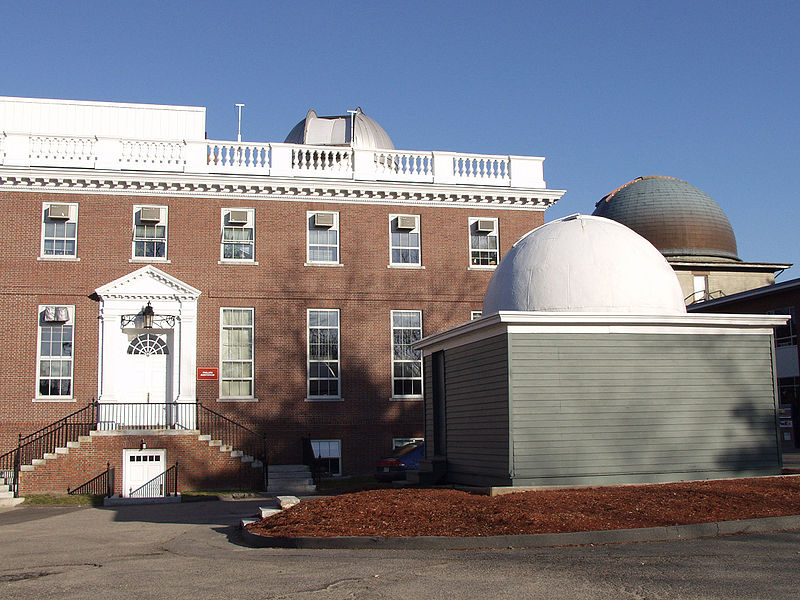
Woah! Are we actually closer to finding aliens?
Are we alone? Scientists think they may have found evidence we’re not. But it’s taken a lot of money to develop the kind of knowledge and technology needed to get there.
Is all that money worth it? And where do we go from here?
We talked to Avi Loeb from the Harvard-Smithsonian Center for Astrophysics – one of the authors of the report – about freak radio waves, alien civilizations, and the business of studying space.
So, about those aliens

Scientists from Harvard University think they might have found evidence that aliens not only exist, but are hard at work making giant light-sail-ships for voyaging between stars. Yep, you read that right. Intelligent life, intergalactic space travel and Harvard scientists, all in the same sentence.
The scientists aren’t saying they’ve proven anything, but they do think the idea’s plausible and worth looking into.
Professor Loeb’s work has to do with short bursts of radio waves (called fast radio bursts, or FRBs).
“FRBs are very brief flashes of radio waves that we see coming to us from all over the sky… they last about a millisecond. They originate from the edge of the universe (as far as we know), but at this point we are not sure what is causing them,” he says.
These bursts don’t look like anything we see in nature, so Loeb and his team have been forced to consider other possibilities.
Professor Loeb was part of a different project which had planned to send a tiny sail – about a gram in weight – to a star in our galaxy using a beam of light. This led him to wonder if a supersized version of that experiment might cause FRBs like the ones currently hitting earth. It sounds like something from sci-fi, but why not?
“Yes, it is possible that these FRBs are coming from an alien life form, otherwise I wouldn’t have written the paper. It is speculation, but I think we should not judge possibilities by prejudice, we should just get more evidence,” he says.
All that looking for aliens isn't cheap...

Back in 2015, NASA’s chief scientist at the time – Ellen Stofan – made a bold statement by predicting that we would find “strong indications” of microbial (or bacteria) life within a decade and “definite evidence” in the next 20 to 30 years.
But alien life isn’t going to find itself. Since the end of the Second World War, governments around the world have put up billions of dollars to fund space exploration. The United States alone spends $19 billion a year on NASA – the country’s primary space and aeronautics program. It sounds like a lot of money (and it is!) but it’s actually a surprisingly small part of the federal budget – half-a-percent.
The American government spends a lot less on space than it did in the 1950s and 1960s, and has continued to trim the budget in recent years. Before the end of presidency, Obama announced he would cut the budget for NASA. NASA’s Exploration Systems Development budget for 2017 is about $300 million smaller than last year.
Spending public money on space has always been a tricky sell when there are so many pressing problems on earth. Many Americans now think of the moon landing as a major national achievement, but at the time it was surprisingly unpopular. Civil rights leader Reverend Ralph Abernathy even led a protest at the Apollo 11 launch site in 1969 against the “tragic and inexcusable gulf that exists between America’s technological abilities and our social injustices”.
In 2010, one science writer argued that the cost of one modern space shuttle is the equivalent cost of "enough electricity to power a U.S. city of two million people for a year”.
...and private funders are footing the bill

There has been a shift in recent years towards interested rich individuals and businesses investing in space exploration, with companies like Elon Musk’s SpaceX leading the way.
Professor Loeb seemed pretty optimistic: “The movement from public sector funding to private sector funding should accelerate the rate at which our technology is changing. The private sector seems to be very interested in space in general.
“Private investors all have their different interests, some want to go to Mars, some want to invest in space travel. But one thing is clear, these days there is a lot of wealth that is in the hands of people who are interested in science, and are technology-savvy, and that is a game changer.”
We asked Loeb why so many scientists are passionate about finding alien life – he said his “hope is that if we did find intelligent life, it would lead to a more peaceful collaboration between people on earth because we would realize that we are one species together, and that there are things outside of earth”.
And, the Space Race of the 20th century was responsible for creating some of the most important technologies of the last 70 years. Who’s to say in another 70 years, our romance with space won’t provide us an even loftier payout?
One last thought...
Those fast radio bursts Professor Loeb was listening to came from more than 2.5 billion light years away. That also means the bursts are at least 2.5 billion years old. So, if it was all down to an alien species, and they were technologically advanced enough to send us FRBs 2.5 billion years ago, what do you think they’re up to these days?



